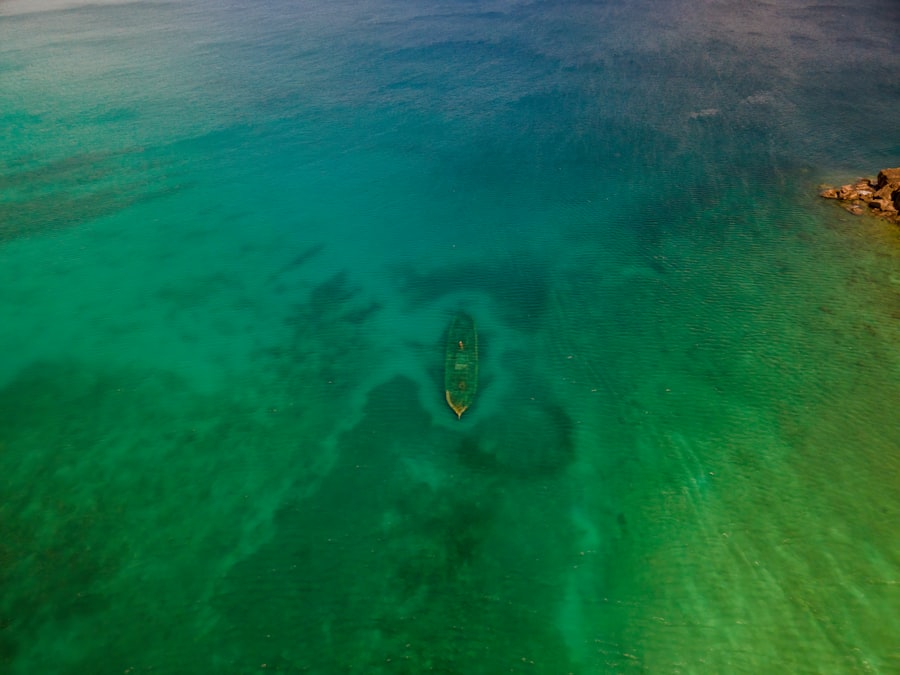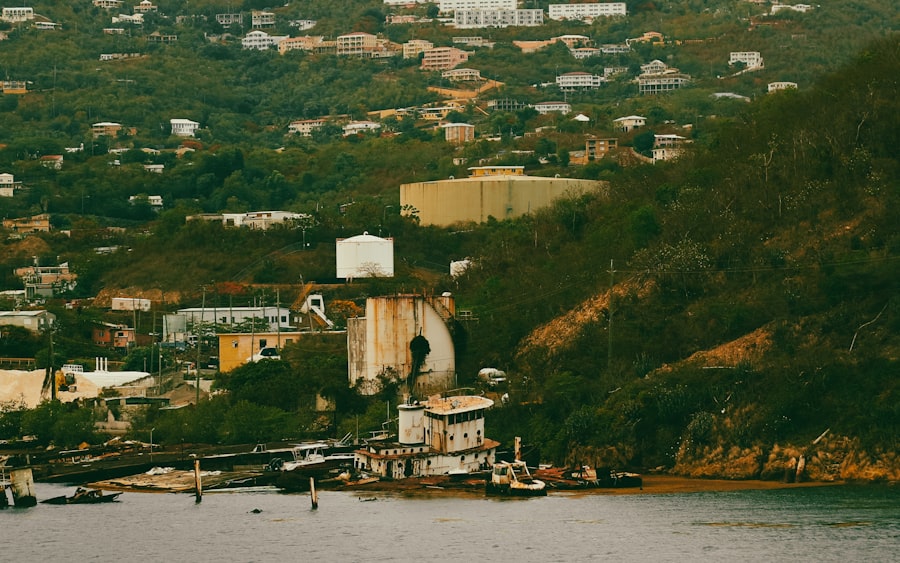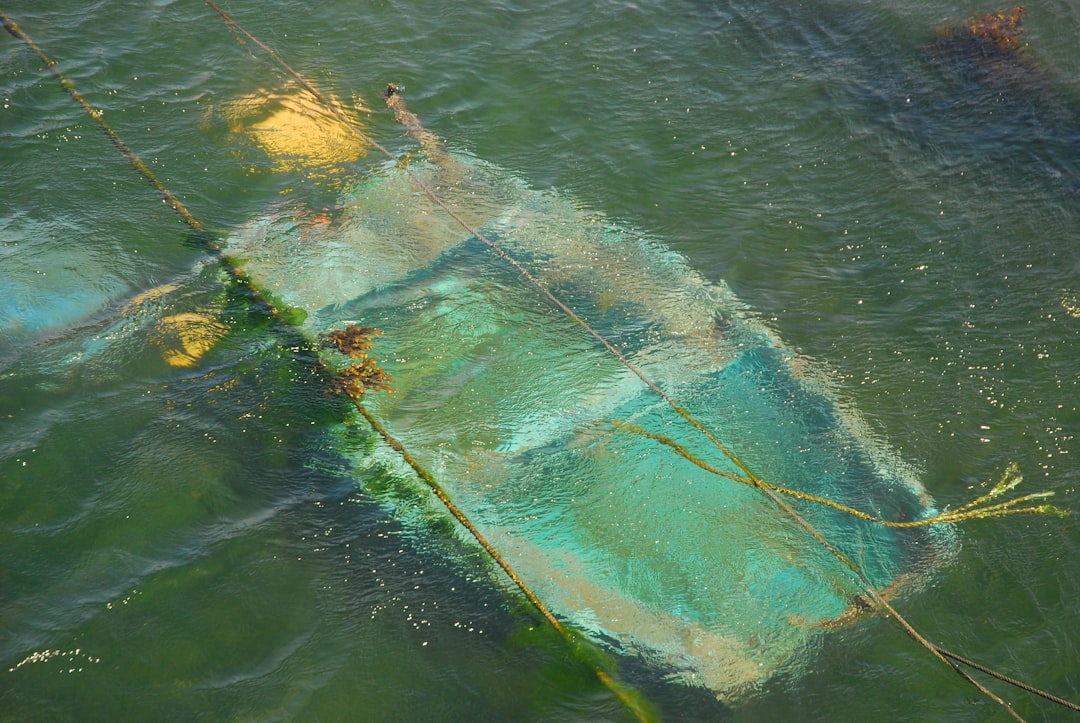Deadly Drake’s Passage, a treacherous stretch of water located between the southern tip of South America and the Antarctic Peninsula, has long been notorious for its perilous conditions. This narrow body of water, named after the infamous English explorer Sir Francis Drake, is characterized by its unpredictable weather patterns, strong currents, and towering waves that can reach heights of over 30 feet. Navigating through this passage is not for the faint-hearted; it has claimed numerous vessels over the centuries, earning its reputation as one of the most dangerous maritime routes in the world.
The combination of natural hazards and the sheer remoteness of the area creates a unique set of challenges for sailors and maritime operators alike. The significance of Deadly Drake’s Passage extends beyond its physical dangers. It serves as a critical gateway for maritime trade and exploration, linking the Atlantic and Pacific Oceans.
The passage is not only a vital route for commercial shipping but also a popular destination for adventure-seekers and researchers drawn to its stunning landscapes and rich biodiversity. However, the allure of this region is tempered by the sobering reality of its history, as countless ships have met their fate in these turbulent waters. Understanding the complexities of Deadly Drake’s Passage requires a deep dive into its history, the vessels lost, and the ongoing efforts to enhance safety in this formidable maritime corridor.
Key Takeaways
- Deadly Drake’s Passage is a treacherous stretch of water known for its history of shipwrecks and dangerous conditions.
- Over the years, 13 vessels have been lost in Deadly Drake’s Passage, leading to significant loss of life and economic impact.
- Shipwrecks in the area have been caused by a combination of factors including strong currents, unpredictable weather, and treacherous underwater terrain.
- Efforts to improve safety in Deadly Drake’s Passage have included the use of advanced technology and increased navigational aids.
- The environmental and economic impact of shipwrecks in Deadly Drake’s Passage has been significant, leading to ongoing concerns and conservation efforts.
History of Shipwrecks in the Area
The history of shipwrecks in Deadly Drake’s Passage is as tumultuous as the waters themselves.
The combination of fierce storms, icebergs, and rocky coastlines has led to countless tragedies, with many vessels disappearing without a trace. The stories of these shipwrecks have become woven into the fabric of maritime lore, serving as cautionary tales for future generations. One particularly notable incident occurred in 1914 when the SS Orinoco sank after colliding with an iceberg while traversing the passage.
This disaster not only highlighted the dangers posed by ice but also underscored the need for improved navigation techniques in such perilous waters. Over the years, various vessels have succumbed to similar fates, each contributing to the growing list of shipwrecks that define Deadly Drake’s Passage. The historical significance of these events cannot be overstated; they serve as reminders of nature’s power and the vulnerabilities inherent in maritime travel.
The 13 Vessels Lost in Deadly Drake’s Passage

Among the many vessels that have been lost in Deadly Drake’s Passage, thirteen stand out due to their tragic stories and the lessons they impart about navigation in these treacherous waters. Each ship represents a unique chapter in the history of maritime exploration and trade, with crews who faced unimaginable challenges. These vessels range from small fishing boats to large cargo ships, all of which were caught in the unforgiving grip of nature.
One such vessel was the HMS Challenger, which sank in 1875 during a fierce storm. The ship was on a scientific expedition when it encountered unexpected weather conditions that led to its demise. The loss of HMS Challenger not only claimed lives but also set back scientific research efforts in the region for years.
Another notable shipwreck is that of the MV San Juan, which met its end in 1982 after running aground on submerged rocks during a foggy night. The stories of these thirteen vessels serve as poignant reminders of the risks associated with navigating Deadly Drake’s Passage and highlight the importance of maritime safety measures.
Causes of Shipwrecks in the Area
| Cause | Frequency |
|---|---|
| Human error | 25 |
| Weather conditions | 18 |
| Navigation errors | 12 |
| Equipment failure | 10 |
| Unknown | 5 |
The causes of shipwrecks in Deadly Drake’s Passage are multifaceted, stemming from both natural phenomena and human error. One of the primary factors contributing to these maritime disasters is the unpredictable weather patterns that characterize the region. Sudden storms can arise without warning, bringing with them fierce winds and towering waves that can easily overwhelm even well-equipped vessels.
Sailors must remain vigilant and prepared for rapid changes in conditions, as complacency can lead to catastrophic outcomes. In addition to weather-related challenges, navigational errors also play a significant role in shipwrecks within this passage. The complex geography of Deadly Drake’s Passage, combined with limited visibility due to fog or storms, can lead to miscalculations by even experienced mariners.
Furthermore, mechanical failures or inadequate vessel maintenance can exacerbate these risks, leaving ships vulnerable to disaster when they are most needed. Understanding these causes is crucial for developing strategies to mitigate risks and enhance safety for those who dare to traverse this perilous waterway.
Efforts to Improve Safety in Deadly Drake’s Passage
In response to the alarming number of shipwrecks in Deadly Drake’s Passage, various organizations and governments have implemented measures aimed at improving safety for vessels navigating this treacherous route. One significant initiative has been the establishment of more comprehensive navigational aids, including updated charts and advanced radar systems designed to help mariners better understand their surroundings. These tools are essential for identifying potential hazards and making informed decisions while at sea.
Additionally, training programs for sailors have become increasingly important in recent years. Emphasizing safety protocols and emergency preparedness, these programs aim to equip crews with the skills necessary to respond effectively to challenging situations. Regular drills and simulations help reinforce these lessons, ensuring that sailors are ready to face whatever challenges may arise while navigating through Deadly Drake’s Passage.
By fostering a culture of safety and awareness, these efforts seek to reduce the risk of future shipwrecks and protect lives at sea.
Environmental Impact of Shipwrecks in the Area

The environmental impact of shipwrecks in Deadly Drake’s Passage extends far beyond the immediate loss of vessels and human life. When ships sink, they can release harmful substances into the surrounding waters, including fuel oil, cargo materials, and hazardous chemicals. These pollutants pose significant threats to marine ecosystems, disrupting delicate habitats and endangering local wildlife.
The consequences can be particularly severe in such a biodiverse region where species rely on clean waters for survival. Moreover, shipwrecks can lead to long-term ecological changes that affect not only marine life but also coastal communities dependent on fishing and tourism. As ecosystems struggle to recover from pollution and habitat destruction caused by wrecks, local economies may suffer as well.
Efforts to address these environmental concerns often involve coordinated clean-up initiatives aimed at removing debris and mitigating damage caused by sunken vessels. However, such endeavors can be resource-intensive and require collaboration among various stakeholders to ensure effective outcomes.
Economic Impact of Shipwrecks in Deadly Drake’s Passage
The economic impact of shipwrecks in Deadly Drake’s Passage is profound and multifaceted. For shipping companies, each loss represents not only a financial setback but also potential liability issues that can arise from accidents at sea. The costs associated with salvaging wrecked vessels or compensating affected parties can be substantial, leading some companies to reconsider their routes or operational practices altogether.
Local economies also feel the repercussions of maritime disasters in this region. Communities that rely on fishing or tourism may experience declines in income due to damaged ecosystems or negative perceptions surrounding safety in Deadly Drake’s Passage. Fishermen may find their catches diminished as pollution affects fish populations, while tourism operators may struggle to attract visitors if concerns about safety overshadow the area’s natural beauty.
Addressing these economic challenges requires a comprehensive approach that balances maritime activity with environmental stewardship and community resilience.
The Role of Technology in Preventing Shipwrecks
Advancements in technology have played a crucial role in enhancing safety measures within Deadly Drake’s Passage and reducing the likelihood of shipwrecks. Modern navigation systems equipped with GPS technology allow mariners to pinpoint their locations with remarkable accuracy, significantly improving their ability to navigate through challenging waters. These systems provide real-time data on weather conditions and potential hazards, enabling sailors to make informed decisions about their routes.
In addition to navigation tools, innovations such as automated weather forecasting systems have transformed how sailors prepare for their journeys through Deadly Drake’s Passage. By providing timely updates on changing weather patterns, these technologies empower crews to adjust their plans accordingly and avoid dangerous conditions whenever possible. Furthermore, advancements in vessel design have led to stronger hulls and improved stability features that enhance overall safety during turbulent voyages.
As technology continues to evolve, it holds great promise for further reducing risks associated with navigating this perilous passage.
Famous Shipwrecks in Deadly Drake’s Passage
Among the many shipwrecks that have occurred in Deadly Drake’s Passage, several stand out due to their historical significance or dramatic circumstances. One such vessel is the RMS Titanic’s sister ship, HMHS Britannic, which sank after hitting a mine during World War I while traversing these waters in 1916. The loss of Britannic not only marked a tragic chapter in maritime history but also prompted significant changes in safety regulations for passenger ships worldwide.
Another infamous wreck is that of the MV Explorer, which sank in 2007 after hitting an iceberg while on an Antarctic cruise. This incident garnered international attention as it highlighted both the allure and dangers associated with adventure tourism in remote regions like Deadly Drake’s Passage. The stories surrounding these famous shipwrecks serve as poignant reminders of the risks inherent in maritime travel while also emphasizing the need for continued vigilance and improvement in safety practices.
The Future of Navigation in Deadly Drake’s Passage
Looking ahead, the future of navigation in Deadly Drake’s Passage will likely be shaped by ongoing advancements in technology and increased awareness of environmental concerns. As shipping traffic continues to grow due to globalization and rising demand for goods, ensuring safe passage through this treacherous waterway will remain a top priority for maritime authorities. Innovations such as autonomous vessels may revolutionize how ships navigate challenging routes by utilizing sophisticated algorithms that optimize routes based on real-time data.
Moreover, collaboration among international stakeholders will be essential for addressing shared challenges related to safety and environmental protection within Deadly Drake’s Passage. By fostering partnerships between governments, shipping companies, environmental organizations, and local communities, it may be possible to develop comprehensive strategies that balance economic interests with ecological sustainability. As navigational practices evolve alongside technological advancements, there is hope for a safer future on these perilous waters.
Remembering the Lives Lost in Deadly Drake’s Passage
In conclusion, Deadly Drake’s Passage stands as a testament to both nature’s power and humanity’s resilience in the face of adversity. The countless lives lost within its turbulent waters serve as poignant reminders of the risks associated with maritime travel throughout history. Each shipwreck tells a story—of adventure, exploration, tragedy, and ultimately lessons learned about safety at sea.
As efforts continue to improve navigation practices and enhance safety measures within this formidable passageway, it is crucial not to forget those who have perished while navigating its depths. By honoring their memories through ongoing education and innovation, society can strive toward creating a safer future for all who dare to traverse Deadly Drake’s Passage—a place where beauty meets danger on an epic scale.
Drake’s Passage, known for its treacherous waters and unpredictable weather, has been the site of numerous shipwrecks throughout history. The perilous conditions have claimed many vessels, making it a notorious route for sailors. For a detailed exploration of the challenges faced by ships navigating this infamous passage, you can read a related article on the topic by visiting this page. This article delves into the historical accounts of shipwrecks and the factors contributing to the high risk of sinking in Drake’s Passage.
WATCH NOW! Drake Passage: Earth’s Deadliest Waters Revealed
FAQs
What is Drake’s Passage?
Drake’s Passage is a body of water located between the southern tip of South America and the northern tip of the Antarctic Peninsula. It is known for its rough seas and challenging sailing conditions.
How many ships have sunk in Drake’s Passage?
There is no definitive number of ships that have sunk in Drake’s Passage. The area is notorious for its treacherous waters and has been the site of numerous shipwrecks throughout history.
What are the main causes of shipwrecks in Drake’s Passage?
The main causes of shipwrecks in Drake’s Passage are the strong winds, high waves, and unpredictable weather conditions. The area is also known for its icebergs, which pose a significant hazard to navigation.
Are there any safety measures in place for ships traveling through Drake’s Passage?
Ships traveling through Drake’s Passage are required to adhere to strict safety protocols, including monitoring weather conditions, navigating around icebergs, and maintaining communication with maritime authorities. Many ships also employ experienced pilots familiar with the area to assist with navigation.
